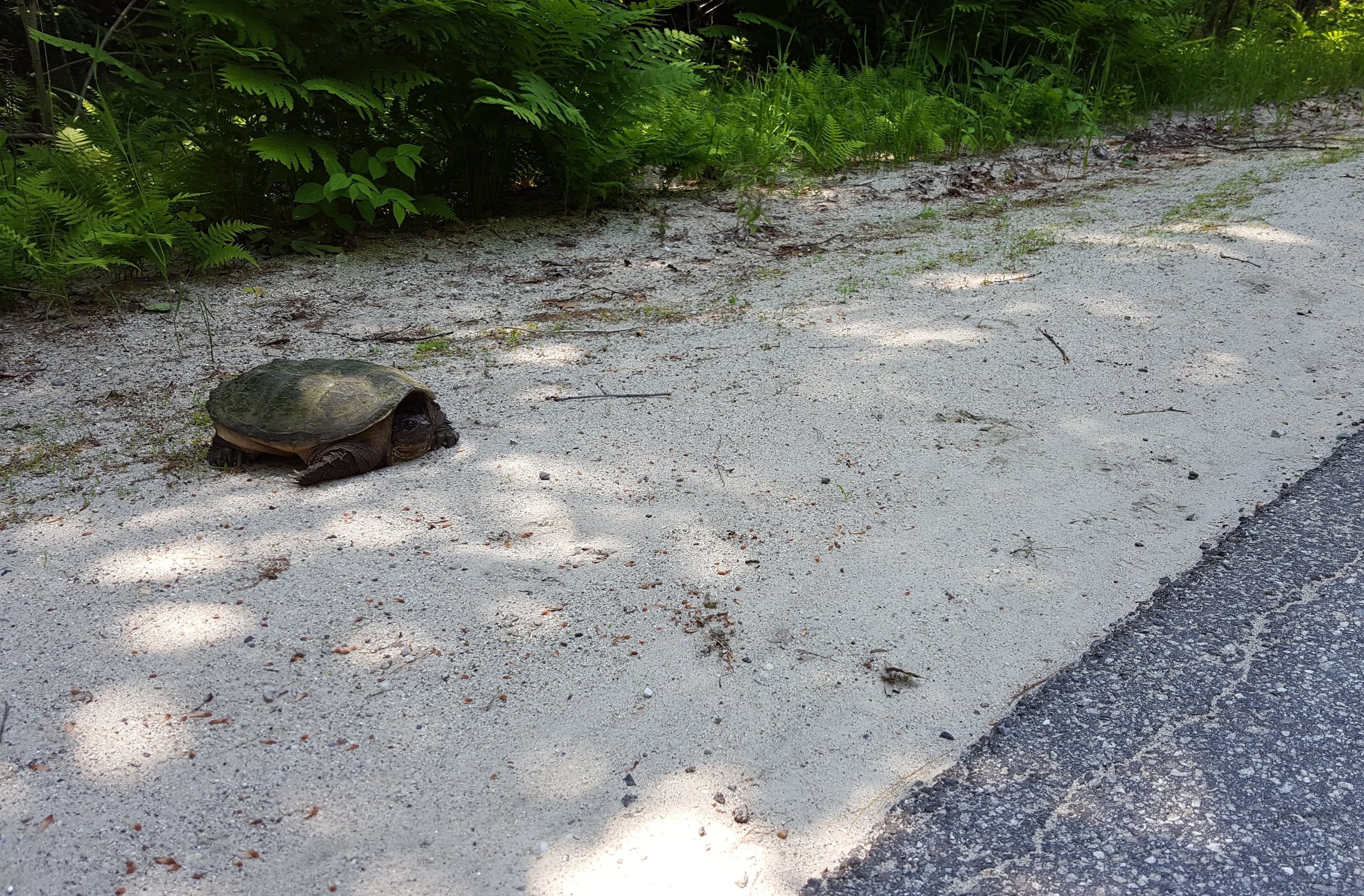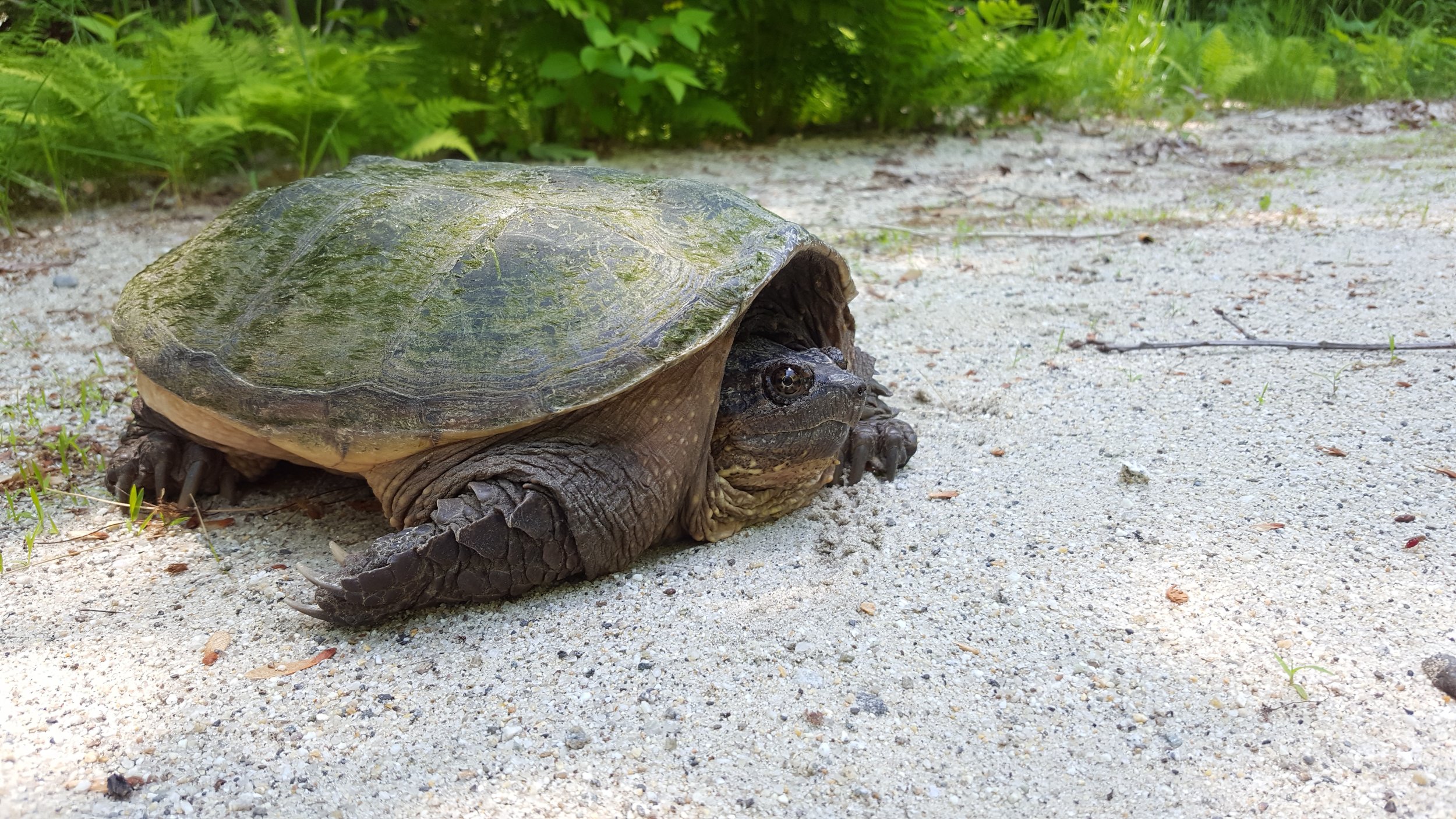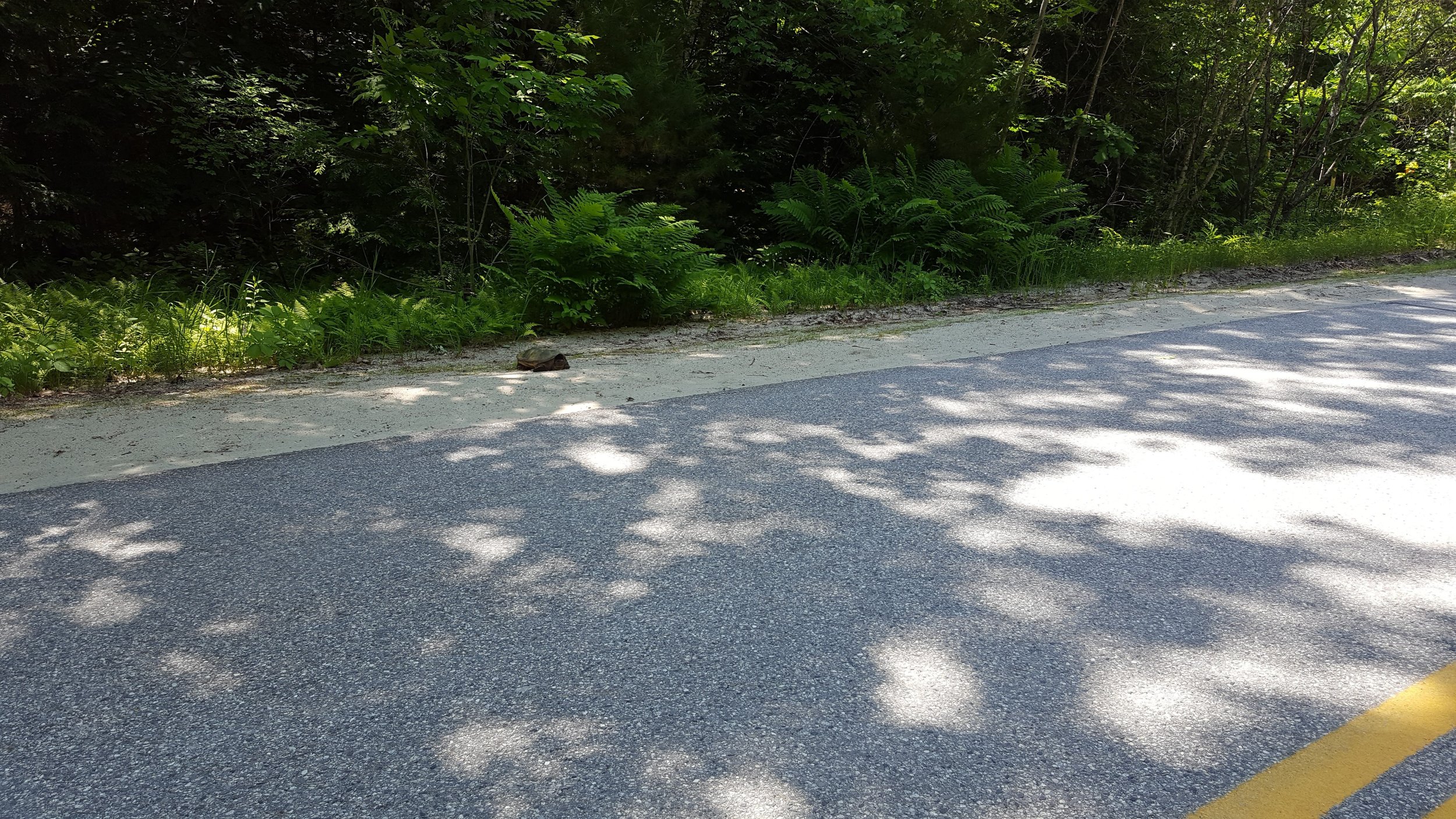Keep your eyes out - turtles are on the move!
Female Snapping Turtles move over land, sometimes great distances through forest and uneven terrain, in a valiant effort to reproduce.
She will dig a shallow nest with her powerful hind legs in a site with well-drained soil that gets plenty of sun - often at the same nest site that she has used for many years. She lays anywhere from 11- 83 eggs (usually 20 - 30) and then covers them with sand and vegetation. Nests are commonly predated by skunks, raccoons, crows, or foxes.
If she's chosen her site wisely, and disguised her nest well, the eggs will safely incubate in the warm sand for the next 80-90 days. Hatchlings may emerge in the fall, but if conditions are too cold they will overwinter and emerge in the spring.
The next time you see a snapper trying to cross a road, think about this: these incredibly tough and long-lived turtles have been here for about 90 million years! After you've made mental note of this mind-blowing fact, kindly pull over and help the turtle cross the road (by following these important tips from the U.S. Fish & Wildlife Service).
Did you know? Snapping Turtles are one of eight turtle species we have here in Maine.
These tips apply to all.



I hope you enjoyed this Phenology Note!
Join me in witnessing the seasons of our wild world.
Posted regularly here, and on Facebook and Instagram:
Follow #ThePersonalEcologist & #PhenologyNotes
Sign up to receive free tips, tools, and insights for building habitat and hope.
#ThePersonalEcologist
I co-create biodiverse habitats with eco-minded stewards throughout the Northeast - at any scale.
I have 30 years of experience and a lifelong commitment to wildlife conservation.
Read My Story.
-
Deborah
Perkins
- Dec 22, 2023 Storm Habitat: Nurse Logs, Dens, and More
- Aug 8, 2023 Beautiful Buttonbush in Bloom
- Jun 17, 2023 Snapping Turtles on the Move
- Feb 1, 2023 The True Harbingers of Spring: Chickadees
- Mar 20, 2021 The Power of Photoperiod
- Feb 19, 2021 The Golden-crowned Kinglet: A Royally Charming Winter Resident
- Feb 8, 2021 Subnivean Secrets
- Jan 9, 2021 Wild Reads: Ravens in Winter
- Oct 23, 2020 Flower “Beds” for Bumble Bees
- Oct 4, 2020 Wise Oaks, Clever Jays
- Sep 11, 2020 Goldenrods: Top Plants for Boosting Biodiversity
- Aug 25, 2020 Gentle Golden Wasps Adorned with Pollen
- Aug 1, 2020 Water for Wildlife - Birdbath Basics & More
- Jul 19, 2020 Fruits of the Forest
- Jul 11, 2020 Hungry Little Hummingbirds
- Jun 24, 2020 Hatching Out: Mother Nature's "Escape Room"
- Jun 12, 2020 Maine's Real Lupine Revealed
- May 31, 2020 Wild Geranium in Flower
- May 24, 2020 Moosewood Chandeliers
- May 17, 2020 Shadbush in Bloom
- May 7, 2020 Native Nectar for Queen Bumble Bees
- Apr 25, 2020 Waves of Warblers
- Apr 19, 2020 Attracting Bluebirds without Boxes
- Apr 12, 2020 Hungry Bears on the Move
- Apr 5, 2020 Bees on Red Maple Flowers
- Mar 27, 2020 Sky Dancing
- Mar 22, 2020 Fox Kits Being Born
- Mar 15, 2020 Corvids a-Courtin’
- Mar 8, 2020 Phenology Notes: Witnessing The Seasons of our Wild World
- Feb 5, 2019 Plan Your Habitat Garden
- Jan 2, 2019 Wild Reads: We Took to The Woods
- Nov 28, 2018 Winterberry: The Gift that Keeps on Giving
- Aug 16, 2018 Where Have All the Whip-poor-wills Gone?
- Jun 22, 2018 Give a Warm Welcome to Wild Bees (Super-pollinators Part 2)
- May 16, 2018 The Wonder of Wild Bees (Super-pollinators Part 1)
- Apr 19, 2018 Saving Songbirds Starts with Your Morning Coffee
- Mar 21, 2018 Wildlife Habitat Design in A Wounded World
- Feb 16, 2018 “Intelligent Tinkering” - How to Boost Biodiversity at Home (Leopold’s Wise Words Part 2)
- Jan 18, 2018 Carnivore Coexistence (Leopold's Wise Words - Part 1)
- Dec 14, 2017 Dead and Dying Trees are Key to Life
- Nov 14, 2017 A Top Threat to Biodiversity: Invasive Plants
- Oct 18, 2017 Hallowed Habitat
- Sep 21, 2017 Beechnuts - Superfood for Bears & Other Wildlife
- Aug 22, 2017 Baby Bats Need Love Too
- Jul 25, 2017 Bring the Magic of Fireflies Back Home Again



